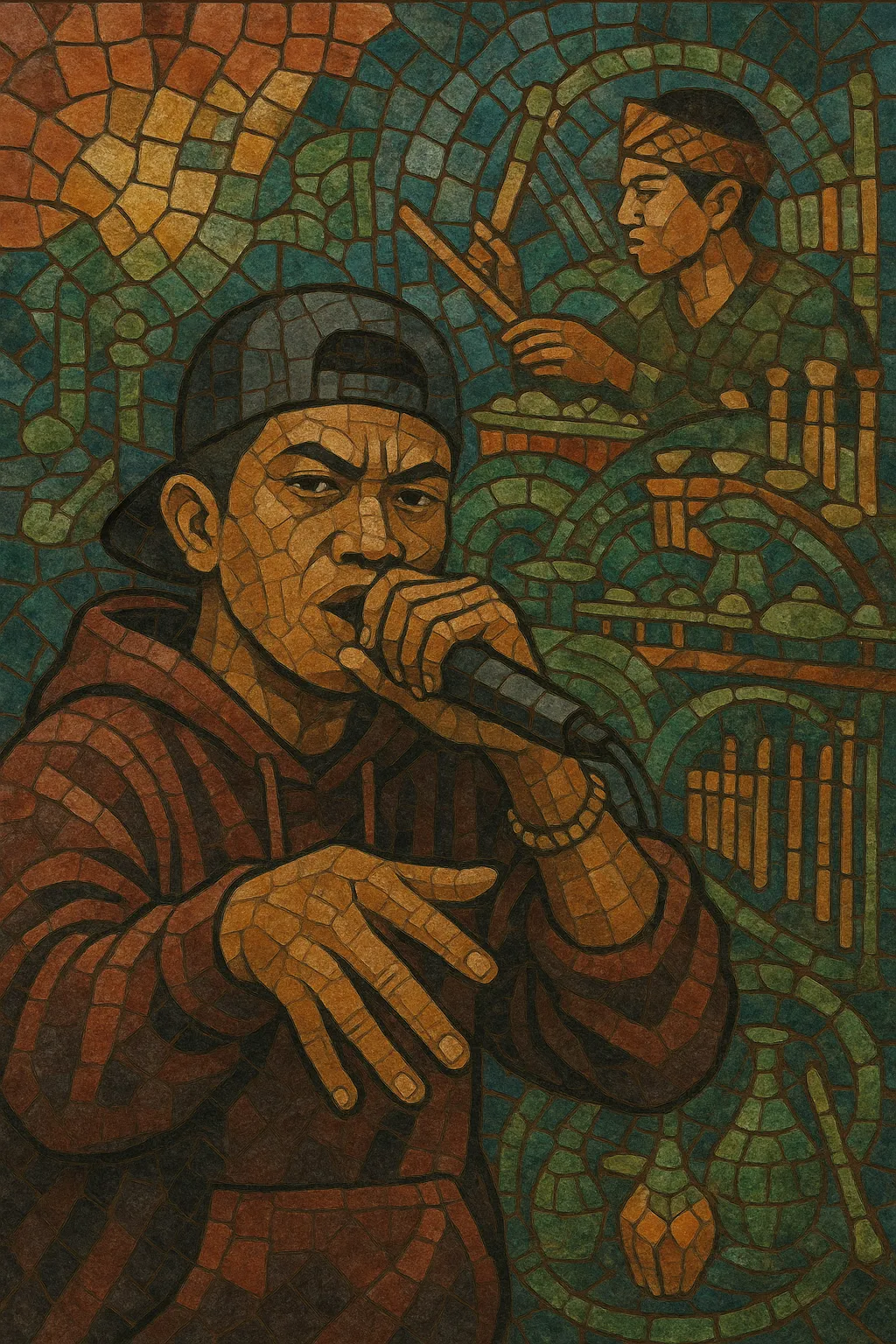Indonesian hip hop is the localized adaptation of hip hop culture in Indonesia, performed primarily in Bahasa Indonesia and often blended with regional languages such as Javanese, Sundanese, and Balinese. It spans from sample-based boom bap and G‑funk to modern trap and drill-inflected productions, with lyricism that ranges from socially conscious and political commentary to humorous storytelling and internet-age flexes.
A defining trait is its integration of Indonesian musical DNA: producers frequently weave elements of dangdut (and its high-energy koplo variants), gamelan textures, kendang drum patterns, and bamboo or reed timbres (e.g., suling, angklung) into 808-driven beats. Scenes in Jakarta, Bandung, Yogyakarta, and beyond have distinct aesthetics—from underground, hard-hitting flows to pop-leaning rap with R&B hooks—creating a broad spectrum that resonates both locally and globally.
Hip hop reached Indonesia in the early 1990s through cassettes, radio, and music television. Iwa K emerged as the pioneering mainstream rapper, establishing a template for Bahasa Indonesia rap and showing that local flows could sit naturally on boom bap and G‑funk styles. Parallel to pop-leaning acts, Bandung’s underground incubated a grittier, politically charged strain—most notably Homicide—whose DIY ethos and sharp social critique made them seminal for Indonesia’s hardcore rap canon.
The 2000s saw broader commercial adoption and stylistic diversification. Saykoji popularized clever, tech-savvy storytelling in Bahasa Indonesia, while groups like Bondan Prakoso & Fade 2 Black bridged rap with rock/funk crossovers. R&B/rap hybrids and crew cultures formed in Jakarta and Bandung, as indie labels, college gigs, and community events provided infrastructure for shows and mixtapes.
Social media, YouTube, and streaming platforms catalyzed a new wave. Rich Brian’s viral breakout (later joining 88rising) placed Indonesian rap on the global map, while local stars such as Ramengvrl, A. Nayaka, Young Lex, and Tuan Tigabelas flourished domestically. Production trends shifted toward trap and melodic rap, yet Indonesia’s signature remained: code-switching between Indonesian and English, and periodic returns to boom bap roots.
Yogyakarta’s Jogja Hip Hop Foundation showcased full-on Javanese rap, bringing traditional poetics and intonation into hip hop cadences. Elsewhere, artists folded Sundanese and Balinese phrases, and some blended rap with dangdut/koplo energy, yielding festival-ready hybrids and the hipdut crossover lane. This multilingualism reinforced the genre’s cultural specificity while keeping it accessible to a wider audience.
Indonesian hip hop now spans underground and mainstream circuits, from activist bars to brand stages and festivals. Producers regularly sample gamelan, dangdut rhythms, and vintage Indonesian pop, while emcees address urban life, identity, humor, and socio-political realities. The scene continues to professionalize (management, PR, touring) without losing its community roots.


